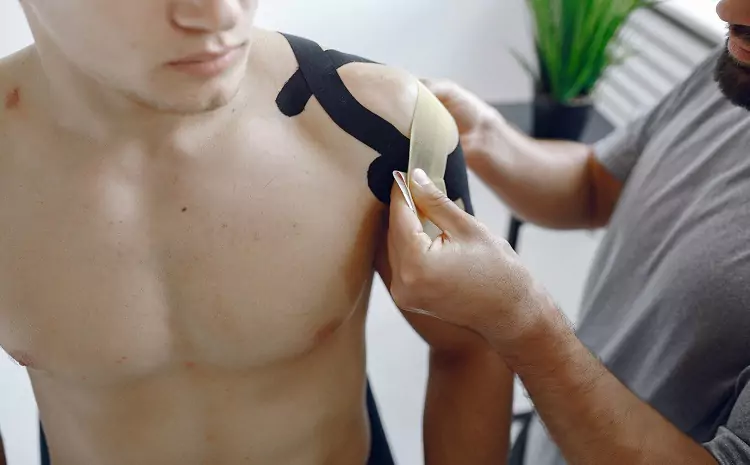Pain. It’s a universal human experience, an unwelcome guest that disrupts our lives and throws a wrench into our plans. We often view pain as a negative signal, a red flag that something is wrong. While that’s certainly part of the story, what if we reframed pain as a messenger, albeit a sometimes irritating one, trying to tell us something important about our body? This shift in perspective opens the door to a whole new approach to healing, one that goes beyond simply silencing the pain and focuses on addressing its root cause. Physiotherapy, with its holistic approach, is a powerful tool in this journey of healing from the inside out.
Beyond the Band-Aid: Unveiling the Layers of Pain
Traditional approaches to pain management often focus on symptom relief. We pop a pill, slather on some topical cream, or endure the discomfort hoping it will magically disappear. While these methods can provide temporary relief, they rarely address the underlying cause of the pain. Pain can be a complex issue, often stemming from a combination of factors like muscle imbalances, postural issues, joint dysfunction, and even emotional stress. Ignoring these deeper causes allows the pain to linger, potentially worsening over time.
Physiotherapy takes a different approach. It views pain as a symptom, a window into what’s happening within your body. Through a comprehensive assessment, a physiotherapist will delve deeper, exploring your medical history, daily activities, and the nature of your pain. They’ll perform physical tests to evaluate your posture, movement patterns, muscle strength, and joint mobility. This detective work helps them identify the underlying issues contributing to your pain.
The Power of Movement: Rebalancing Your Body
Once the root cause of your pain is identified, the physiotherapist will create a personalized treatment plan designed to address it directly. Here’s where the magic of movement comes in. Physiotherapy utilises various therapeutic exercises to:
- Improve Muscle Strength and Balance: Weak or imbalanced muscles can contribute to pain. Physiotherapists design targeted exercises to strengthen specific muscle groups, promoting better balance and stability. This reduces pressure on joints and allows your body to move more efficiently.
- Enhance Flexibility and Range of Motion: Stiff joints can restrict movement and lead to pain. Physiotherapists use stretching techniques and manual therapy to improve your flexibility and range of motion, allowing you to move freely and with less discomfort.
- Correct Postural Issues: Poor posture can put undue stress on your muscles and joints, leading to pain. Physiotherapy programs often incorporate postural awareness exercises that help you stand, sit, and move with proper alignment, reducing strain and preventing future problems.
- Promote Healing and Tissue Repair: Specific exercises can promote blood flow and circulation to the affected area, accelerating the healing process and reducing inflammation.
The Mind-Body Connection: Addressing the Whole You

While the physical aspects of physiotherapy are crucial, it’s important to remember that pain can also be influenced by emotional factors. Stress, anxiety, and even fear can exacerbate pain or make it more difficult to manage. We asked doctor Simone from AppliedMotion Physio Clinic in Mount Hawthorn, Western Australia about this. This is what he told us: “Yes, the mind-body connection is pretty strong and good physiotherapists understands this. They may incorporate relaxation techniques like deep breathing or mindfulness exercises into your program to help you manage stress and improve your pain tolerance. This holistic approach fosters a sense of empowerment, allowing you to take an active role in your healing journey”.
The Road to Recovery: More Than Just Exercises

Physiotherapy offers a toolbox with various techniques beyond just exercises. Here are some additional tools that might be included in your treatment plan:
- Manual Therapy: This hands-on approach involves techniques like massage, joint mobilization, and soft tissue mobilization to improve flexibility, reduce pain, and promote healing.
- Therapeutic Modalities: Physiotherapists may utilize modalities like heat therapy, ultrasound, or electrical stimulation to manage pain, reduce inflammation, and promote tissue healing.
- Education and Self-Management: A crucial aspect of physiotherapy is empowering you to manage your pain beyond the therapy sessions. Physiotherapists educate you on proper body mechanics, safe exercise techniques, and strategies for managing pain at home. They will also recommend exercises you can do independently to maintain the progress made in therapy.

Healing from the Inside Out: A Journey of Self-Discovery
The process of healing through physiotherapy can be a transformative experience. As you move your body with greater ease and experience a reduction in pain, you’ll likely rediscover a sense of freedom and mobility you may have thought lost. This newfound physical well-being can have a profound impact on your overall life. You might find yourself engaging in activities you previously avoided due to pain, whether it’s dancing with your grandkids, tackling your garden with renewed vigor, or simply taking a pain-free walk in the park.
Physiotherapy can also be empowering. As you learn to manage your pain and take control of your health, you develop a sense of resilience and self-confidence. You become an active participant in your own healing, no longer a passive recipient of treatment. This shift in perspective fosters a sense of control and empowers you to make healthy choices that promote long-term well-being.
Embracing the Journey: A Commitment to a Healthier You
Physiotherapy isn’t a quick fix. It requires dedication and a willingness to invest time and effort in your recovery. However, the rewards are substantial. With consistent participation in your therapy program and adherence to the recommended exercises, you can expect to see significant improvements in your pain levels, mobility, and overall quality of life.
Remember, the journey towards healing is a marathon, not a sprint. There may be setbacks along the way, days when the pain feels overwhelming or progress seems slow. But with perseverance and the support of your physiotherapist, you can overcome these challenges and emerge stronger and healthier.

